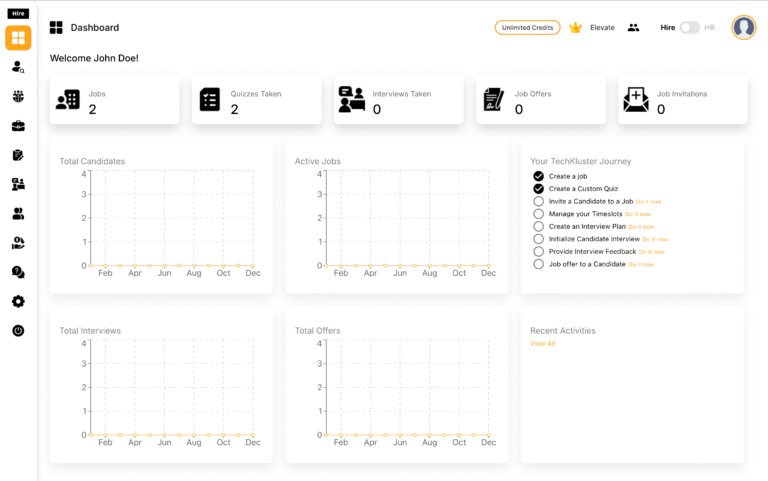Imagine spending weeks polishing your resume, researching the company, and practicing answers to “Tell me about a time you failed” — only to submit your application into what feels like a black hole. Days turn into weeks. Silence. When you finally muster the courage to follow up, you’re met with a generic “We’ve moved forward …
Imagine spending weeks polishing your resume, researching the company, and practicing answers to “Tell me about a time you failed” —
only to submit your application into what feels like a black hole. Days turn into weeks. Silence. When you finally muster the courage to follow up, you’re met with a generic “We’ve moved forward with other candidates” email. No feedback. No explanation. Just… nothing.
This isn’t just a minor annoyance — it’s a trust grenade. Candidates aren’t just frustrated; they’re sharing their horror stories on Glassdoor, Reddit, and TikTok. One viral post about ghosting or vague rejections can torpedo a company’s reputation overnight. Worse, talented applicants who could have been future hires or customers walk away feeling undervalued.
Why Secrecy Backfires (And Costs You Talent)
Ghosting = Grudge-Holding:
A Talent Board study found that 60% of candidates never hear back after applying, and 72% of those ghosted will badmouth the company to friends or online. Think of it as a modern-day version of “word-of-mouth” — except it’s global, permanent, and brutally public.
The “Ninja Rockstar” Paradox:
Vague job posts attract mismatched candidates. If your ad says you need a “coding wizard who thrives in chaos,” you’ll get everyone from burnt-out FAANG engineers to self-taught hobbyists. No wonder turnover is high — hires realize too late the role wasn’t what they signed up for.
Feedback Famine:
Rejection without context breeds paranoia. Candidates obsess over unanswered questions: “Was it my resume gap? My accent during the Zoom call? Did I wear the wrong shirt?” Without clarity, they assume the worst — and so does their network.
How to Fix It (Without Overloading Your HR Team)
Real-Time Tracking: Turn the “Black Hole” Into a Glass Box
Tools like Greenhouse or Lever let candidates track their application status like an Amazon package. Even simple SMS updates (“Your interview is scheduled for Tuesday!”) reduce anxiety. Techkluster takes it further with dashboards showing exactly where candidates stand — “Under Review,” “Interview Stage,” or “Not Selected” — so they’re never left guessing.
Structured Interviews: Ditch the Wing-It Approach
Define clear criteria upfront (“We assess Python skills, collaboration, and crisis management”) and share this with candidates. No more surprise “brain teasers” that test how well they handle absurdity. Use tools like HireVue or Techkluster to standardize scoring, so feedback isn’t just “Good vibes!” but “Scored 4/5 on problem-solving; struggled with edge cases.”
Rejection Emails That Don’t Suck
Automated doesn’t have to mean robotic. Techkluster and Ashby let recruiters send personalized rejections with actionable feedback: “Your coding test scored in the top 30%, but we prioritized candidates with more cloud experience. Here’s a free Coursera course to bridge the gap!” It’s a rejection, but it feels human — and keeps candidates engaged for future roles.
Bias Audits: Shine a Light on Hidden Filters
Regularly check if your ATS is secretly axing non-traditional candidates. Tools like Textio scan job posts for biased language (“rockstar” = male-coded), while Applied anonymizes applications to hide demographics. Techkluster flags patterns like “Why are we rejecting all candidates over 40?” so recruiters can course-correct.
The ROI of Radical Transparency
Companies like Buffer and GitLab (fully remote, fully transparent) prove that openness isn’t just ethical — it’s profitable. Their hiring processes include public salary bands, interview rubrics, and even rejection templates. The result?
Lower Turnover:
Candidates know exactly what they’re signing up for.
Stronger Employer Brand:
83% of candidates say they’d share a positive hiring experience online.
Loyal Talent Pipelines:
Even rejected candidates reapply or refer others because they trust the process.
Hot Take:
If your hiring process feels like a CIA operation, you’re not being “strategic.” You’re being self-sabotaging.





